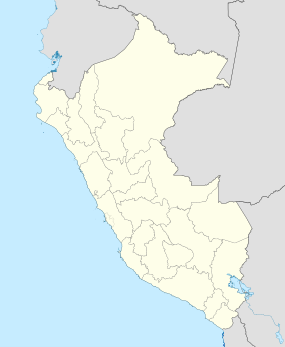Sacsayhuamán

A section of the wall of Saksaywaman
|
|
| Location | Cusco, Cusco Region, Peru |
|---|---|
| Coordinates | 13°30′28″S 71°58′56″W / 13.50778°S 71.98222°WCoordinates: 13°30′28″S 71°58′56″W / 13.50778°S 71.98222°W |
| Type | Fortification |
| Part of | Cusco |
| History | |
| Cultures | Inca Empire |
Saksaywaman, Saqsaywaman, Sasawaman, Saksawaman, Sacsahuayman, Sasaywaman or Saksaq Waman (Quechua language, waman falcon or variable hawk, hispanicized spellings Sacsayhuamán, Sacsayhuaman, Sacsahuaman, Saxahuaman and others) is a citadel on the northern outskirts of the city of Cusco, Peru, the historic capital of the Inca Empire. Sections were first built by the Killke culture about 1100; they had occupied the area since 900. The complex was expanded and added to by the Inca from the 13th century; they built dry stone walls constructed of huge stones. The workers carefully cut the boulders to fit them together tightly without mortar. The site is at an altitude of 3,701 m (12,142 ft).
In 1983, Cusco and Saksaywaman together were added to the UNESCO World Heritage List for recognition and protection.
Located on a steep hill that overlooks the city, the fortified complex has a wide view of the valley to the southeast. Archeological studies of surface collections of pottery at Saksaywaman indicate that the earliest occupation of the hilltop dates to about 900CE.
According to Inca oral history, Tupac Inca "remembered that his father Pachacuti had called city of Cuzco the lion city. He said that the tail was where the two rivers unite which flow through it, that the body was the great square and the houses round it, and that the head was wanting." The Inca decided the "best head would be to make a fortress on a high plateau to the north of the city." But archeologists have found that Saksaywaman was built by the preceding Killke culture; it was expanded by the Inca beginning about the 13th century.
After the Battle of Cajamarca during the Spanish Conquest of the Inca, Francisco Pizarro sent Martin Bueno and two other Spaniards to transport the gold and silver from the Temple of Coricancha to Cajamarca, the base of the Spanish. They found the Temple of the Sun "covered with plates of gold", which the Spanish ordered removed in payment for Atahualpa's ransom. Seven hundred plates were removed, and added to two hundred cargas of gold transported back to Cajamarca. The royal mummies, draped in robes, and seated in gold embossed chairs, were left alone. But, while desecrating the temple, Pizarro's three men also defiled the Virgins of the Sun.
...
Wikipedia

